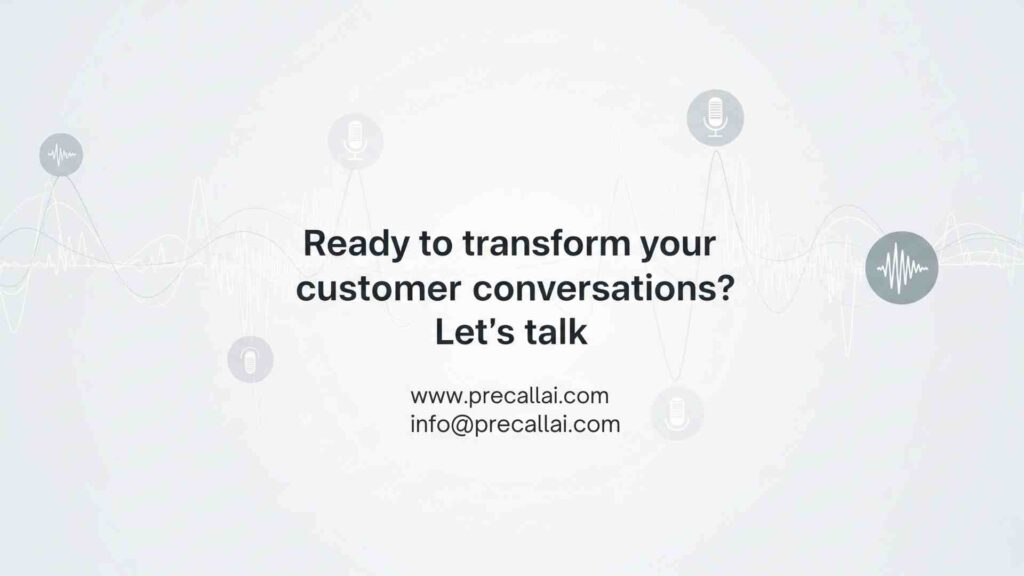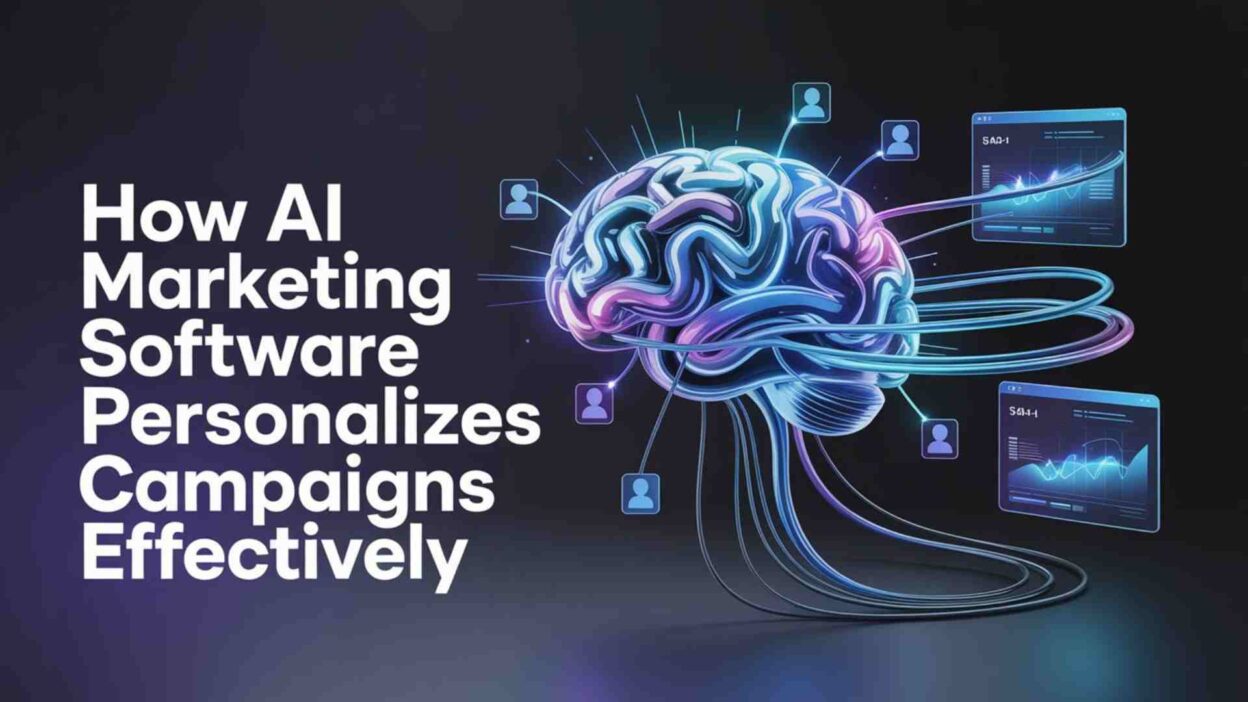Introduction
TL;DR Marketing has changed forever. Traditional campaigns no longer deliver the results businesses need. Customers expect brands to understand their preferences. They want content that speaks directly to their needs.
Table of Contents
AI-driven marketing software for personalized campaigns solves this challenge. These tools analyze vast amounts of customer data in seconds. They identify patterns human marketers might miss. The software creates unique experiences for each customer automatically.
Modern businesses face intense competition. Standing out requires more than generic advertising. Personalization has become the key to winning customer loyalty. AI makes this level of customization possible at scale.
The technology learns from every interaction. It adapts campaigns based on real-time customer behavior. This continuous improvement drives better results over time. Businesses using these tools see higher engagement rates. They enjoy increased conversion rates and stronger customer relationships.
Understanding AI-Driven Marketing Software
What Makes AI Marketing Software Different
AI-driven marketing software for personalized campaigns uses machine learning algorithms. These systems process customer data from multiple sources. They create detailed profiles of individual customers. The software predicts what content will resonate with each person.
Traditional marketing tools require manual input. Marketers must segment audiences themselves. They create separate campaigns for each group. This process takes considerable time and effort.
AI software automates these tasks completely. It segments audiences based on hundreds of variables. The system updates segments as customer behavior changes. This dynamic approach keeps campaigns relevant and effective.
The technology analyzes purchase history automatically. It tracks website browsing patterns in real time. Social media interactions provide additional insights. Email engagement metrics contribute to the overall picture.
Core Components of AI Marketing Platforms
Every AI marketing platform includes several essential features. Data collection tools gather information from various channels. Analytics engines process this data rapidly. Prediction models forecast customer behavior accurately.
Automation capabilities execute campaigns without manual intervention. The system sends emails at optimal times. It displays ads to the right audiences. Content recommendations appear based on individual preferences.
Integration features connect with existing business tools. Customer relationship management systems share data seamlessly. E-commerce platforms provide purchase information. Social media accounts feed engagement metrics into the system.
Machine learning models improve campaign performance continuously. They test different approaches automatically. The software identifies which strategies work best. It allocates resources to the most effective tactics.
The Technology Behind Personalization
Natural language processing helps AI understand customer sentiment. The software reads customer reviews and feedback. It identifies emotional responses to different messages. This insight guides content creation strategies.
Predictive analytics forecasts future customer actions. The system calculates the likelihood of purchases. It determines which customers might churn soon. These predictions enable proactive campaign adjustments.
Computer vision technology analyzes visual content. The software understands which images attract attention. It identifies design elements that drive engagement. This capability optimizes creative assets automatically.
Deep learning algorithms recognize complex patterns. They process unstructured data from diverse sources. The technology connects seemingly unrelated data points. These connections reveal hidden opportunities for personalization.
How AI Personalizes Marketing Campaigns at Every Stage
Customer Data Collection and Analysis
AI-driven marketing software for personalized campaigns begins with data collection. The system captures information from every customer touchpoint. Website visits provide behavioral insights. Email interactions reveal content preferences.
Purchase transactions show buying patterns clearly. The software tracks the product categories that customers explore. It notes the time spent on different pages. Shopping cart additions and abandonments signal intent levels.
Social media activity adds another dimension. The system monitors likes, shares, and comments. It analyzes which posts generate the most engagement. This information shapes future content strategies.
The software combines online and offline data sources. Point-of-sale systems contribute purchase information. Customer service interactions provide feedback data. All these sources create comprehensive customer profiles.
Data cleaning processes ensure accuracy. The system removes duplicate entries automatically. It validates contact information continuously. Outdated data gets flagged for review or removal.
Audience Segmentation Through Machine Learning
Machine learning algorithms create sophisticated audience segments. The software groups customers based on behavior patterns. It considers demographics, psychographics, and purchase history simultaneously.
Micro-segments emerge from detailed analysis. These groups share very specific characteristics. They respond to similar messaging and offers. Campaigns targeting micro-segments achieve higher conversion rates.
The system updates segments in real time. Customer actions trigger immediate profile updates. Someone browsing winter coats gets added to cold-weather segments. This responsiveness keeps targeting accurate and relevant.
Lookalike modeling identifies potential new customers. The software analyzes existing high-value customers. It finds prospects with similar characteristics. Marketing campaigns reach these qualified leads first.
Churn prediction segments highlight at-risk customers. The system identifies warning signs of disengagement. Special retention campaigns target these segments. Personalized offers encourage continued loyalty.
Content Personalization and Dynamic Messaging
AI-driven marketing software for personalized campaigns creates unique content variations. The system generates subject lines tailored to individual preferences. It customizes email body content based on past interactions. Product recommendations match specific customer interests.
Website content changes for each visitor automatically. Returning customers see different homepage elements. First-time visitors receive introductory messages. The experience adapts to user behavior in real time.
A/B testing happens continuously and automatically. The software tests multiple content versions simultaneously. It measures performance across different segments. Winning variations get deployed immediately.
Language and tone adapt to customer preferences. Some audiences respond to casual, friendly messaging. Others prefer professional, formal communication. The system matches the style to each segment.
Visual elements get personalized, too. The software selects images based on customer demographics. It chooses colors that appeal to specific groups. Layout arrangements optimize for individual engagement patterns.
Timing Optimization for Maximum Impact
Send time optimization ensures messages arrive atthe perfect moments. The software analyzes when each customer typically engages. It schedules emails for these high-response times. This simple adjustment significantly improves open rates.
Frequency capping prevents message fatigue. The system monitors how many communications each customer receives. It adjusts sending frequency based on engagement levels. Highly engaged customers might receive more messages. Less active subscribers get fewer communications to prevent annoyance.
Behavioral triggers activate campaigns automatically. Cart abandonment emails send within hours. Browse abandonment messages follow specific page visits. Post-purchase follow-ups arrive at strategic intervals.
Seasonal patterns influence timing decisions. The software recognizes shopping behavior changes during holidays. It adjusts campaign schedules accordingly. Back-to-school campaigns reach parents at the right moment. Holiday promotions arrive when customers start shopping.
Real-time triggers respond to immediate actions. Someone downloading a whitepaper receives related content instantly. A product page visitor sees retargeting ads within minutes. This immediacy capitalizes on active interest.
Key Features of AI-Driven Marketing Software for Personalized Campaigns
Predictive Customer Behavior Modeling
Predictive models forecast which products customers will buy next. The software analyzes past purchase patterns extensively. It considers seasonal trends and lifecycle stages. Recommendations appear before customers even search.
Lifetime value predictions identify high-potential customers. The system calculates expected revenue from each customer. Marketing resources get allocated accordingly. High-value prospects receive more personalized attention.
Churn probability scores highlight retention risks. The software detects declining engagement patterns. It flags customers showing warning signs. Retention campaigns activate automatically for these individuals.
Conversion likelihood scores prioritize leads effectively. Sales teams focus on prospects most likely to buy. Marketing campaigns target high-probability converters. This efficiency improves return on investment dramatically.
Multi-Channel Campaign Orchestration
AI-driven marketing software for personalized campaigns coordinates messages across channels. Email, SMS, social media, and display ads work together. The system ensures consistent messaging everywhere. Customers experience seamless brand interactions.
Channel preferences get learned automatically. Some customers prefer email communication. Others engage more through social media. The software adapts the channel mix for each person.
Cross-channel attribution tracks customer journeys accurately. The system credits each touchpoint appropriately. Marketers understand which channels drive conversions. Budget allocation becomes more strategic and effective.
Sequential messaging guides customers through purchase journeys. Initial awareness messages introduce the brand. Consideration content addresses specific questions. Decision-stage communications provide final purchase incentives.
Message suppression prevents duplicate communications. Someone who purchases receives confirmation emails only. They stop seeing promotional ads for purchased products. This coordination improves customer experience significantly.
Real-Time Personalization Engines
Real-time engines adjust content instantly based on behavior. A website visitor sees different content with each click. Product recommendations update after every interaction. The experience becomes more relevant continuously.
Dynamic pricing optimization adjusts offers automatically. The software considers inventory levels and demand. It factors in individual customer price sensitivity. Personalized discounts maximize both conversion and margin.
Live chat personalization tailors automated responses. The system accesses customer history instantly. It provides relevant answers based on past interactions. Complex queries route to appropriate team members.
Mobile app experiences personalize on-the-fly. Push notifications adapt to usage patterns. In-app content matches individual preferences. The software creates unique experiences for each user.
Advanced Analytics and Reporting
Performance dashboards display campaign results clearly. Metrics update in real time continuously. Marketers see exactly which personalization strategies work best. They make data-driven decisions quickly and confidently.
Attribution modeling connects marketing activities to revenue. The system tracks customer journeys from first touch to purchase. It assigns appropriate credit to each campaign. This visibility justifies marketing investments effectively.
Cohort analysis reveals how different segments perform. The software compares groups over time. It identifies which acquisition sources bring valuable customers. This insight shapes future targeting strategies.
Predictive analytics forecast campaign outcomes before launch. The system estimates expected performance metrics. Marketers adjust strategies proactively. This foresight reduces wasted spend significantly.
Benefits of Using AI-Driven Marketing Software for Personalized Campaigns
Increased Customer Engagement Rates
Personalized campaigns capture attention more effectively. Customers see content relevant to their interests. They spend more time engaging with messages. Open rates increase substantially compared to generic campaigns.
Click-through rates improve dramatically with personalization. Targeted content drives more website visits. Product recommendations generate higher interaction. Customers explore offerings that match their needs.
Social media engagement grows through relevant content. The software identifies topics that resonate. It schedules posts when audiences are most active. Followers interact more frequently with personalized content.
Email engagement metrics show consistent improvement. Personalized subject lines boost open rates significantly. Customized content increases click-through performance. Fewer recipients mark messages as spam.
Higher Conversion Rates and ROI
AI-driven marketing software for personalized campaigns converts prospects more effectively. Relevant offers match customer needs precisely. Purchase barriers get addressed proactively. Conversion rates climb steadily over time.
Shopping cart abandonment decreases with personalized recovery campaigns. The software sends targeted reminders automatically. It includes relevant product recommendations. Dynamic discounts incentivize purchase completion.
Average order values increase through smart recommendations. The system suggests complementary products effectively. Bundle offers match customer preferences. Upselling and cross-selling become more successful.
Customer acquisition costs decrease over time. Targeting efficiency improves continuously. Marketing spend focuses on high-probability prospects. Wasted impressions and clicks diminish significantly.
Return on marketing investment multiplies with AI personalization. Every dollar spent generates more revenue. Campaign efficiency compounds over time. Businesses achieve sustainable growth through optimized marketing.
Enhanced Customer Experience and Satisfaction
Customers appreciate brands that understand their preferences. Personalized experiences create positive emotional connections. Satisfaction scores improve across all touchpoints. Brand perception strengthens through relevant interactions.
Communication frequency matches individual preferences automatically. Customers never feel overwhelmed by messages. They receive valuable content at appropriate intervals. This balance maintains engagement without causing annoyance.
Relevant product recommendations save customers time. They discover items that match their needs quickly. The shopping experience becomes more efficient. Customers find what they want without extensive searching.
Personalized customer service resolves issues faster. Support teams access complete customer histories instantly. They provide contextual assistance efficiently. Problems get solved in fewer interactions.
Improved Customer Retention and Loyalty
Personalized experiences build stronger customer relationships. People return to brands that understand them. Repeat purchase rates increase significantly. Customer lifetime value grows substantially over time.
Loyalty program engagement improves through personalization. The software recommends relevant rewards automatically. It creates customized earning opportunities. Members participate more actively in programs.
Churn rates decline with proactive retention campaigns. The system identifies at-risk customers early. Personalized win-back offers address specific concerns. Many customers remain loyal through targeted intervention.
Brand advocacy increases among satisfied customers. Personalized experiences create memorable moments. Customers share positive experiences with others. Word-of-mouth marketing amplifies naturally.
Implementing AI Marketing Software Successfully
Choosing the Right AI Marketing Platform
Platform selection requires careful evaluation. Businesses must assess their specific needs first. Company size influences platform requirements significantly. Small businesses need different features than enterprises.
Integration capabilities matter tremendously. The software should connect with existing systems easily. CRM compatibility ensures seamless data flow. E-commerce platform integration enables purchase tracking.
Scalability considerations affect long-term success. The platform should grow with the business. It must handle increasing data volumes efficiently. Performance should remain consistent as usage expands.
User interface simplicity impacts adoption rates. Marketing teams need intuitive tools. Complex systems create training challenges. Easy-to-use platforms deliver faster results.
Budget constraints guide platform selection. Different solutions offer varying pricing models. Some charge based on contact volume. Others price according to feature usage. Total cost of ownership includes implementation and training.
Data Integration and Quality Management
Data integration connects all customer information sources. The software consolidates data from multiple systems. Website analytics, CRM, and sales platforms feed the system. Social media data adds valuable behavioral insights.
Data quality determines personalization effectiveness. Clean, accurate data produces better results. The system needs current contact information. Outdated or incorrect data undermines campaigns.
Data governance policies protect customer information. Businesses must comply with privacy regulations. The software should support GDPR and CCPA requirements. Consent management features handle permissions properly.
Regular data audits maintain information quality. The system flags inconsistencies automatically. Duplicate records get identified and merged. Data enrichment services enhance profile completeness.
Training Teams and Building Capabilities
Marketing teams need proper training on AI tools. They must understand how personalization works. Training programs should cover system features comprehensively. Hands-on practice builds confidence and competence.
Data literacy becomes increasingly important. Marketers must interpret analytics correctly. They need to understand algorithm recommendations. Statistical basics help evaluate campaign performance.
Creative skills remain essential despite automation. AI handles execution, but humans create strategy. Teams develop compelling messages and offers. They define brand voice and positioning.
Cross-functional collaboration enhances results. Marketing works closely with sales teams. Customer service provides valuable feedback. Product teams share roadmap information.
Continuous learning keeps teams current. AI technology evolves rapidly. Regular training updates maintain skills. Industry events provide networking and education opportunities.
Measuring Success and Optimizing Performance
Clear metrics define success from the beginning. Businesses establish baseline performance levels. They set realistic improvement targets. Progress gets tracked consistently over time.
Key performance indicators vary by business objective. E-commerce focuses on conversion rates and revenue. Lead generation prioritizes qualified lead volume. Brand awareness campaigns track reach and engagement.
A/B testing validates personalization strategies. The software compares personalized versus generic campaigns. Results demonstrate clear performance differences. Data justifies continued investment in personalization.
Regular performance reviews identify optimization opportunities. Teams analyze which segments perform best. They discover which personalization tactics work effectively. Insights guide future strategy adjustments.
AI-driven marketing software for personalized campaigns requires ongoing optimization. The system learns continuously from new data. Performance improves steadily over time. Businesses must commit to long-term refinement.
Common Challenges and Solutions
Data Privacy and Compliance Concerns
Privacy regulations create complexity for marketers. GDPR in Europe imposes strict requirements. CCPA in California adds additional rules. Businesses must handle customer data responsibly.
Consent management systems track permissions carefully. The software records what customers authorize. It restricts data usage to approved purposes. Automated compliance reduces legal risks significantly.
Transparency builds customer trust effectively. Businesses explain how they use data clearly. Privacy policies outline personalization practices. Customers appreciate honest communication.
Data minimization principles guide collection practices. Companies gather only the necessary information. Excessive data creates unnecessary risk. Focused collection improves security and compliance.
Security measures protect customer information. Encryption safeguards data in transit and storage. Access controls limit who sees sensitive information. Regular security audits identify vulnerabilities.
Integration Complexity with Existing Systems
Legacy systems present integration challenges. Older platforms lack modern API capabilities. Custom development may become necessary. Integration costs can exceed initial estimates.
Middleware solutions bridge incompatible systems. These tools translate data between platforms. They enable communication despite technical differences. Integration becomes possible without replacing existing systems.
Phased implementation reduces complexity. Businesses connect systems incrementally. They start with highest-priority integrations. Additional connections happen over time.
Professional services accelerate integration projects. Experienced consultants navigate technical challenges. They implement best practices efficiently. Their expertise prevents common mistakes.
Balancing Automation with Human Touch
Complete automation can feel impersonal. Customers still value human interaction. The challenge lies in finding the right balance. Technology should enhance relationships, not replace them.
High-value interactions require human involvement. Complex sales benefit from personal attention. Customer service issues need empathetic responses. AI handles routine tasks, freeing humans for important work.
Escalation rules ensure appropriate routing. Simple questions get automated responses. Complex situations reach human representatives. The system recognizes when personal attention helps.
Personalization should feel natural, not creepy. Excessive customization makes customers uncomfortable. Subtle personalization works better than obvious manipulation. The goal is relevance, not surveillance.
Future Trends in AI Marketing Personalization
Conversational AI and Chatbots
Chatbots handle customer interactions increasingly well. Natural language processing improves continuously. Bots understand context and intent accurately. They provide helpful responses instantly.
Voice-activated assistants expand marketing channels. Customers interact with brands through smart speakers. Voice search optimization becomes more important. AI personalizes audio content and responses.
Conversational commerce enables shopping through chat. Customers browse products via messaging apps. They complete purchases without leaving conversations. This convenience drives adoption rapidly.
Hyper-Personalization Through AI
Personalization becomes even more granular. AI creates unique experiences for individuals. It considers hundreds of variables simultaneously. Every interaction feels custom-designed.
Real-time context awareness enhances relevance. The system considers current location and weather. It factors in time of day and device type. Messages adapt to immediate circumstances.
Emotional AI reads customer sentiment accurately. The software detects frustration or excitement. It adjusts responses appropriately. This emotional intelligence improves customer relationships.
Predictive and Prescriptive Analytics
Predictive capabilities grow more sophisticated. AI forecasts customer needs before they arise. It anticipates life events and changing preferences. Proactive marketing addresses needs customers haven’t expressed.
Prescriptive analytics recommend specific actions. The system suggests optimal strategies automatically. It provides step-by-step implementation guidance. Marketers make better decisions faster.
Automated decision-making increases steadily. AI executes strategies without human approval. It makes thousands of micro-decisions daily. Human oversight focuses on strategy and ethics.
Frequently Asked Questions
What is AI-driven marketing software for personalized campaigns?
AI-driven marketing software uses artificial intelligence to customize marketing messages. The technology analyzes customer data automatically. It creates unique experiences for each person. Campaigns become more relevant and effective through intelligent automation.
How does AI personalize marketing campaigns?
AI collects data from multiple customer touchpoints. It identifies patterns in behavior and preferences. Machine learning algorithms create detailed customer segments. The software delivers tailored content to each segment automatically.
What are the benefits of using AI for marketing personalization?
Businesses see higher engagement rates with personalized campaigns. Conversion rates improve significantly through relevant messaging. Customer satisfaction increases when brands understand preferences. Marketing ROI grows as efficiency improves over time.
Is AI marketing software suitable for small businesses?
Many AI marketing platforms serve small businesses effectively. Cloud-based solutions offer affordable pricing models. Small companies access enterprise-level capabilities. The software scales as businesses grow larger.
How much does AI marketing software cost?
Pricing varies widely across different platforms. Some charge monthly subscription fees per user. Others’ bill based on the contact database size. Enterprise solutions require custom pricing discussions. Small business options start at reasonable monthly rates.
What data does AI marketing software need?
The software requires customer contact information initially. Behavioral data improves personalization significantly. Purchase history provides valuable insights. Website analytics and email engagement data enhance capabilities. More data enables better personalization over time.
How long does it take to see results?
Initial results appear within weeks of implementation. Campaign performance improves as AI learns. Significant improvements become evident after several months. The system continues optimizing indefinitely. Long-term gains compound continuously.
Does AI replace human marketers?
AI augments human capabilities rather than replacing them. The technology handles repetitive tasks automatically. Marketers focus on strategy and creativity. Human judgment remains essential for success. Teams become more productive with AI assistance.
How does AI handle data privacy?
Reputable AI marketing platforms prioritize privacy. They include compliance features for regulations. Encryption protects customer information. Access controls limit data exposure. Businesses maintain responsibility for ethical usage.
Can AI marketing software integrate with existing tools?
Most platforms offer extensive integration capabilities. They connect with popular CRM systems easily. E-commerce platforms integrate smoothly. Marketing automation tools link seamlessly. API access enables custom integrations.
Read More: How AI Integrations Improve Hiring Efficiency in HR
Conclusion

AI-driven marketing software for personalized campaigns transforms how businesses connect with customers. The technology delivers relevant experiences at unprecedented scale. Every customer receives messages tailored to their specific needs.
AI marketing technology will continue advancing rapidly. New capabilities emerge regularly. Businesses that embrace these tools position themselves for sustained success. Those who delay risk falling behind competitors.
The future of marketing belongs to personalization. AI makes this future accessible today. Businesses of all sizes can leverage these powerful tools. The question is not whether to adopt AI marketing software. The question is how quickly to begin implementation.
Smart businesses start their AI personalization journey now. They begin with clear objectives and realistic expectations. They commit to continuous learning and optimization. Success builds momentum over time.
AI-driven marketing software for personalized campaigns represents the new standard. Customer expectations continue rising steadily. Generic marketing approaches no longer satisfy demanding audiences. Personalization powered by AI delivers the relevance customers demand.
Marketing teams become more strategic with AI assistance. They spend less time on manual tasks. They focus more energy on creative strategy. Job satisfaction increases as work becomes more meaningful.
Customer relationships deepen through consistent personalization. Trust builds when brands demonstrate real understanding. Loyalty follows naturally from positive experiences. AI enables these valuable connections at scale.
Marketing evolution continues to accelerate rapidly. AI represents the current frontier of capability. Future developments will build on this foundation. Early adoption provides learning advantages for what comes next.
Customer expectations will never decrease. Personalization standards only become more demanding. Businesses must meet these rising expectations. AI provides the necessary capabilities effectively.
The marketing landscape has changed permanently. AI-driven personalization defines the new normal. Businesses adapt or face obsolescence. The choice belongs to each organization.






[…] Read More: How AI Marketing Software Personalizes Campaigns Effectively […]
[…] Read More:-How AI Marketing Software Personalizes Campaigns Effectively […]